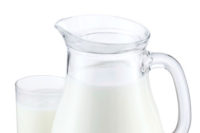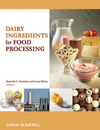Low-fat Dairy on Weight

Researchers Gilly A. Hendrie and Rebecca K. Golley conducted a 24-week cluster, randomized, controlled trial with 93 families with children 4-13 years old. The families were randomly allocated to parental education regarding changing to reduced-fat dairy foods (n = 76 children) or reducing screen time (n = 69 children). Study outcomes, which were measured at baseline, 12 weeks (which was the end of the intervention) and 24 weeks, included saturated fat, caloric and nutrient intakes; and blood lipid concentrations; body mass index (BMI); and waist circumference.
Children in both groups ate roughly the same amount of dairy; (about 50g/d). Children’s whose parents were educated on saturated fat intakes had 3.3 percentage points lower (P<0.0001) saturated fat intake at 24 weeks than in the comparison group. Concentrations of a specific saturated fat, pentadecanoic acid, were lower after 12 weeks (0.03%; P = 0.012), but not after 24 weeks. Low density lipoprotein (LDL) cholesterol concentrations were not different after 12 weeks, but were 0.15mmol/L lower in the intervention group after 24 weeks than in the comparison group (P = 0.037). There were no significant group differences in total caloric intake or adiposity measures. Regular-fat dairy foods decreased from 88% to 14% of dairy intake in the intervention group. Calcium, magnesium and carbohydrate (percentage of energy) intakes were higher in the intervention group than in the comparison group; retinol intakes were lower in the intervention group than in the comparison group; and overall vitamin A intakes were similar between groups.
Hendrie and Golley concluded, “Advice to parents to change to reduced-fat products was effective in reducing children's saturated fat intakes, but did not alter energy intakes or measures of adiposity."
From the May 9, 2011, Prepared Foods' Daily News.
Looking for a reprint of this article?
From high-res PDFs to custom plaques, order your copy today!





